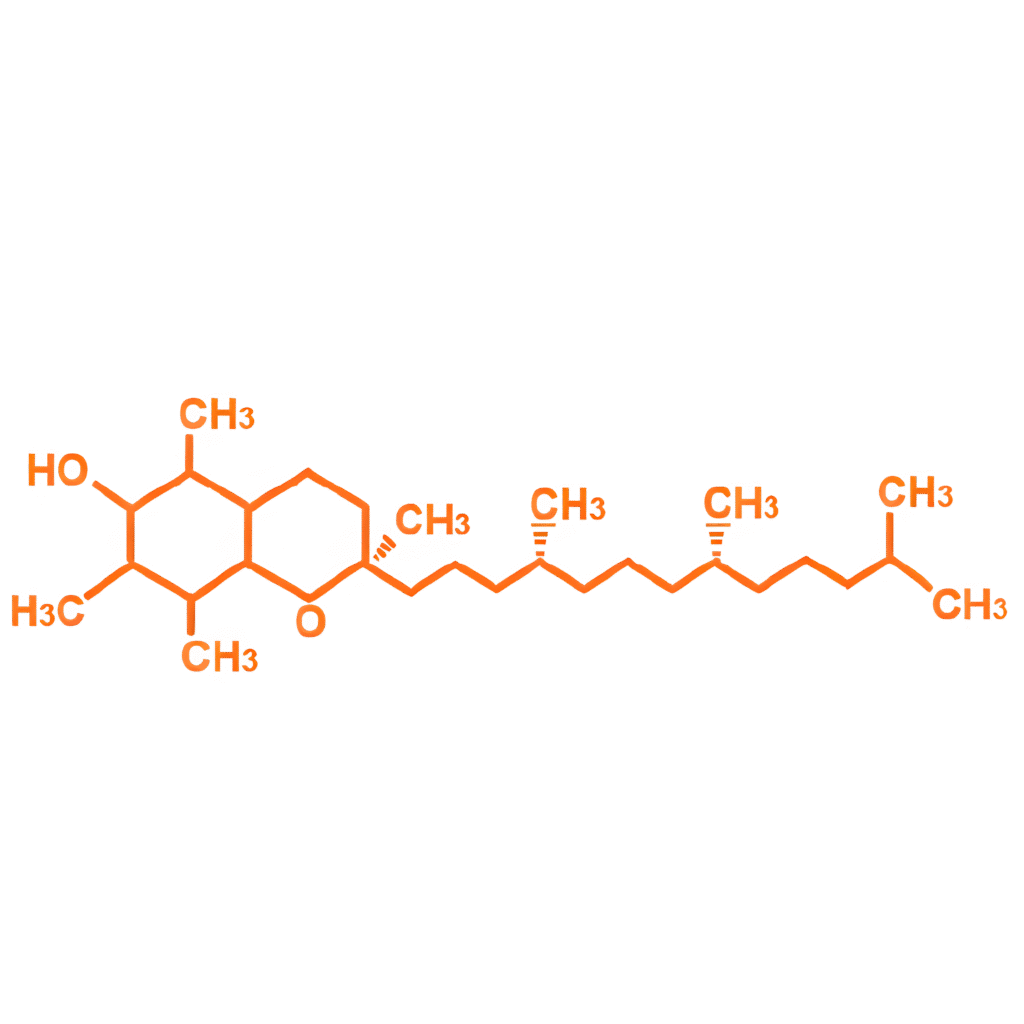Struggling with training or focus? Vitamin E supports recovery, strength, and brain health. Learn how to optimize this essential antioxidant.
Navigation: Stack Index | Vitamins | Minerals | Supplements

Vitamin E is a powerful antioxidant that shields your cells from oxidative damage—the kind that builds up from training, poor sleep, environmental stress, or aging. But it’s more than just a “defense vitamin.” It influences how well your muscles recover, how sharp your mind stays, and how efficiently your immune system works. In fact, low Vitamin E levels can make your body slower to repair and more prone to fatigue, inflammation, and even cognitive decline.
In tactical terms: Vitamin E helps your system bounce back faster, protect harder, and age slower.
Optimization Index
- Functions & Mechanism
- Sources (Food & Supplements)
- How to Use (Dosing & Timing)
- Optimization Stacks
- Signs of Deficiency
- Risks & Safety
- What Biohackers Get Right
- References & Further Reading
Most people associate antioxidants with general wellness. But for high performers, Vitamin E is more like armor for your mitochondria and nervous system. Training, fasting, and high-output living generate oxidative stress. Vitamin E acts as the front-line shield—protecting cell membranes, preserving brain function, and keeping your recovery systems sharp.
Vitamin E deficiency is rare but not irrelevant. Poor fat absorption, high oxidative load, or inadequate intake from processed foods can lead to suboptimal levels. The result? Slower post-training recovery, more muscle soreness, mental fatigue, and even increased cardiovascular risk over time.
Functions & Mechanism
Vitamin E is actually a group of fat-soluble compounds, with alpha-tocopherol being the most bioactive form in the human body. It works by:
- Neutralizing free radicals that damage cell membranes
- Supporting T-cell mediated immune function
- Enhancing nitric oxide availability for vascular health
- Preserving myelin sheath integrity in neurons
- Reducing inflammation by modulating cytokine production
Sources (Food & Supplements)
🥜 Top Food Sources
- Sunflower seeds
- Almonds and hazelnuts
- Avocados
- Spinach and Swiss chard
- Olive oil and wheat germ oil
💊 Supplementation
Vitamin E supplements typically use either:
- Natural d-alpha-tocopherol (higher bioavailability)
- Synthetic dl-alpha-tocopherol (less effective, cheaper)
Blended tocopherol and tocotrienol complexes may offer broader benefits, especially for cellular and cognitive health.
How to Use (Dosing & Timing)
| Group | Typical Dose (IU/day) |
|---|---|
| General population | 15 mg (22 IU) |
| High oxidative stress / athletes | 200–400 IU (from mixed tocopherols) |
- Take with fat-containing meals to enhance absorption
- Look for “mixed tocopherols” or tocotrienols for best results
- Avoid megadoses unless prescribed—Vitamin E is fat-soluble and stores in the body
Optimization Stacks
| Goal | Stack Strategy |
|---|---|
| Cellular Resilience | Vitamin E + CoQ10 + Alpha-Lipoic Acid + NAC |
| Brain Longevity | Vitamin E + Omega-3s (DHA/EPA) + Phosphatidylserine |
| Inflammation Control | Vitamin E + Curcumin + Magnesium + Astaxanthin |
Signs of Deficiency
- Muscle weakness or cramps
- Coordination problems or nerve damage
- Visual disturbances
- Increased post-workout soreness or slow recovery
- Immune system slowdown
Risks & Safety
- Excessive Vitamin E (especially synthetic) can increase bleeding risk
- Doses above 1,000 IU/day may interfere with Vitamin K and clotting
- Use caution with blood thinners or high-dose omega-3s
- Stick to natural, food-based or mixed tocopherol supplements
What Biohackers Get Right
Top performance-focused individuals don’t megadose Vitamin E—they use it strategically within oxidative stress and neuroprotection stacks.
- Dr. Rhonda Patrick: Recommends Vitamin E in neuroprotection protocols, especially with fasting or omega-3s
- Dave Asprey: Uses tocotrienols in mitochondrial and anti-aging stacks
Recent studies support this approach. Nutrients (2022) and Journal of Clinical Medicine show alpha-tocopherol improves vascular flexibility and cognitive performance in aging populations.
References & Further Reading
- Vitamin E Fact Sheet – NIH
- The Role of Vitamin E in Human Health – Nutrients (2022)
- Vitamin E and Immune Response – Journal of Clinical Medicine
- FoundMyFitness – Rhonda Patrick on Antioxidants
- Dave Asprey’s Bulletproof Stack
Disclaimer: This content is for educational purposes only and not medical advice. Consult a physician before starting any supplement protocol.
Navigation: Stack Index | Vitamins | Minerals | Supplements